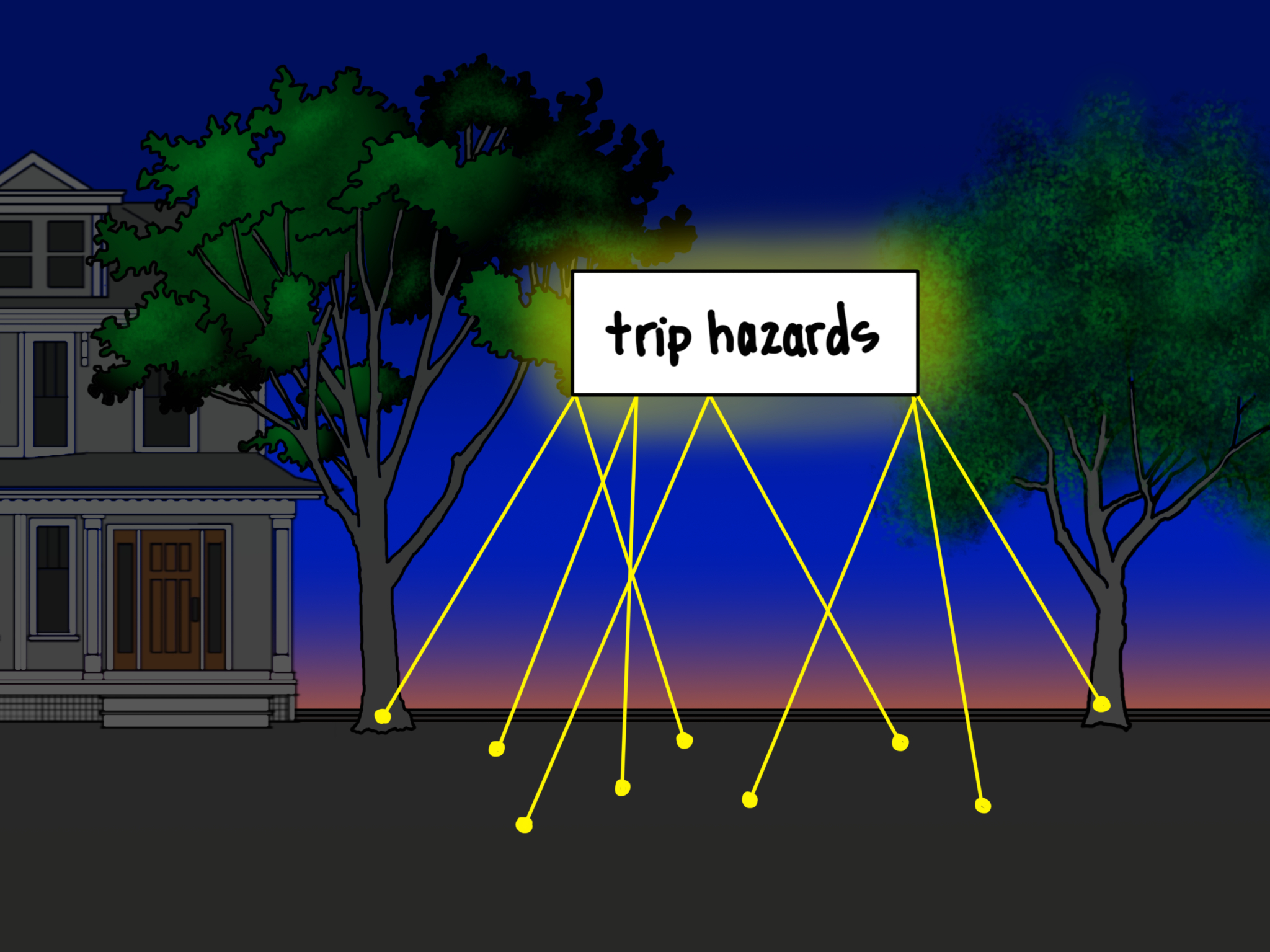My 1THING: New Build series title is a bit awkward when it comes to the great outdoors. Seldom are trees and shrubs and lawns built…rather, they are grown. Oh well, I never promised literary quality, just lighting ideas. If it makes you feel better, call this my 1THING: When-you-hire-professionals-to-do-the-work series. Wow, that has a nice ring, eh?
Now, where was I? Ah, yes, narrowing down thousands of lighting choices to just one for outdoor landscape illumination. There are so many great techniques for outdoor lighting (and indoor, for that matter), that choosing just one can be a challenge. But that’s the very idea – to challenge myself to pick one that I think is the most important, or the most beneficial, or the most beautiful. In the case of a landscape with mature trees, I might have hit all three with today’s choice: moonlighting.
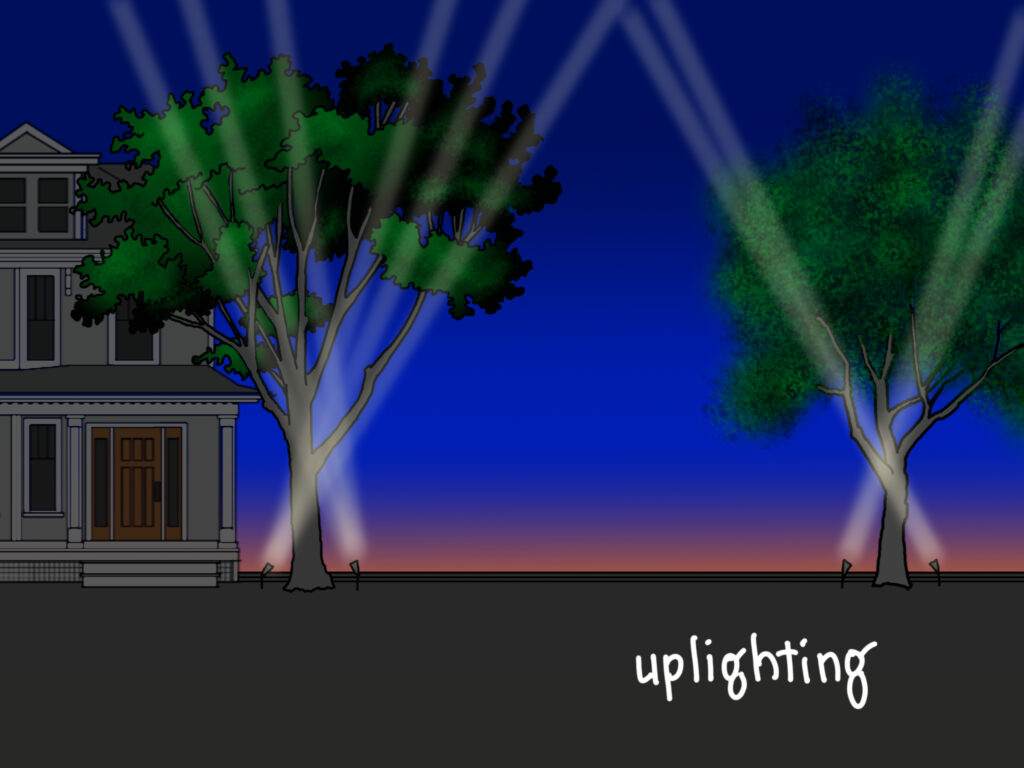
Uplighting trees has long been the first thing I think of when tasked with illuminating a landscape. The technique is easy and looks incredible, like pants that feel like pajamas and look like tailored slacks. Unlike pants, however, uplighting is probably the last technique we should be using. Uplighting makes trees look great, but at the expense of everyone and everything on the planet.
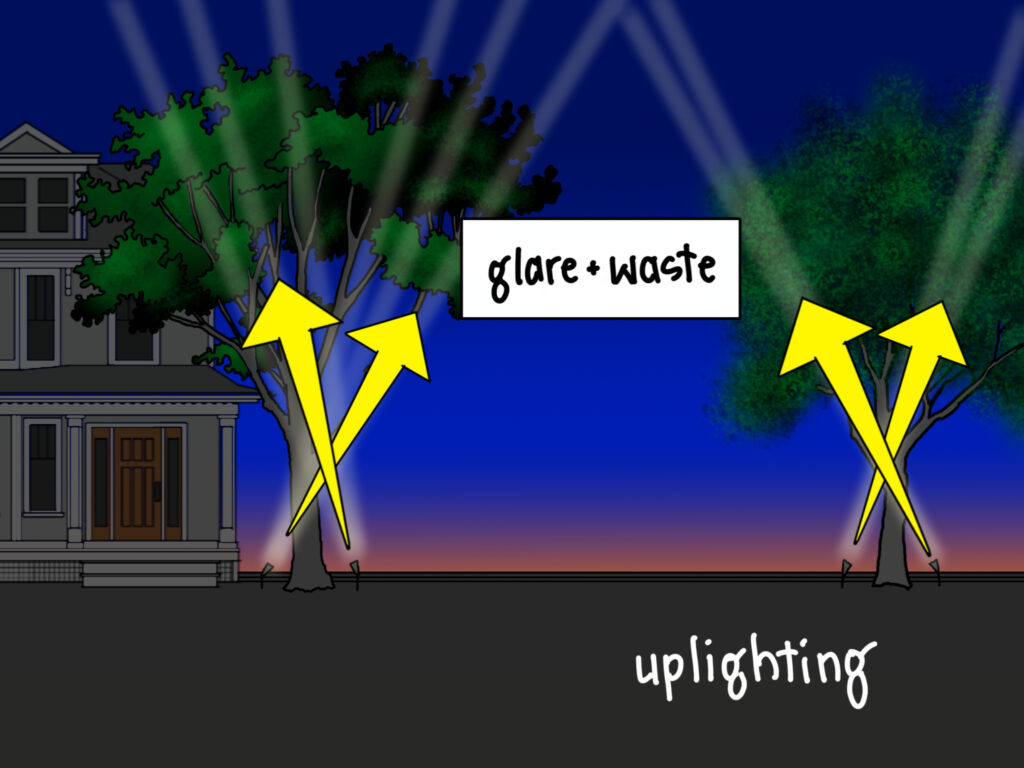
Uplighting is never 100% reflected in the trees, which means that there is always light being sent into the night sky. This is electricity wasted, coal or wind power or nuclear power wasted, fixture capacity wasted. Uplights also have a tendency to shine in your eyes, especially when looking down to make sure you don’t trip. They can introduce glare just when you most need glare eliminated. And that light in the sky isn’t just waste- it keeps us from seeing the stars, disturbs our sleep, and bothers the plants and animals and planet. Bad, bad, more bad. Too bad it looks so good.

If natural light is the best light during the day, perhaps it makes sense that my favorite nighttime lighting technique mimics natural light at night. Camping under a full moon can be a lovely experience (assuming you are not in mosquito territory). Flashlights and lanterns are seldom needed once our eyes acclimate to the low level of light. The moon shines (reflects, rather, but I get to decide just how technical to get on the blog and I’m not going there), er, the moon shines down through trees, softly illuminating the ground and casting beautiful, moving shadows of branches and leaves. Moonlight can be magical, so much so that we write songs about it and associate a moonlit night with romance. Too bad we cannot turn it on and off when needed.
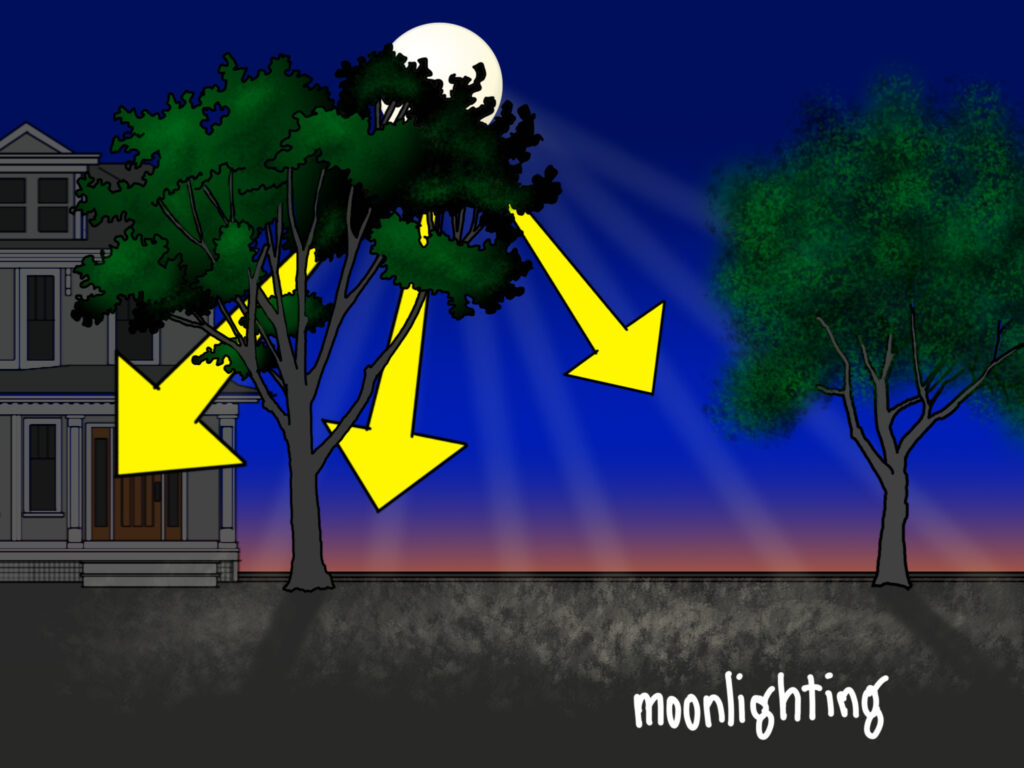
Now that we have a favorite type of natural light at night, we just need to do our best to mimic it. Look at the direction of moonlight – it comes from above, down through the trees, to hit the ground. This is better than uplight for many reasons, such as reducing glare and minimizing light pollution. It just makes sense, too…seldom do we need to see the trees at night, but every night we need to see where our feet are going. We need to see the ground.
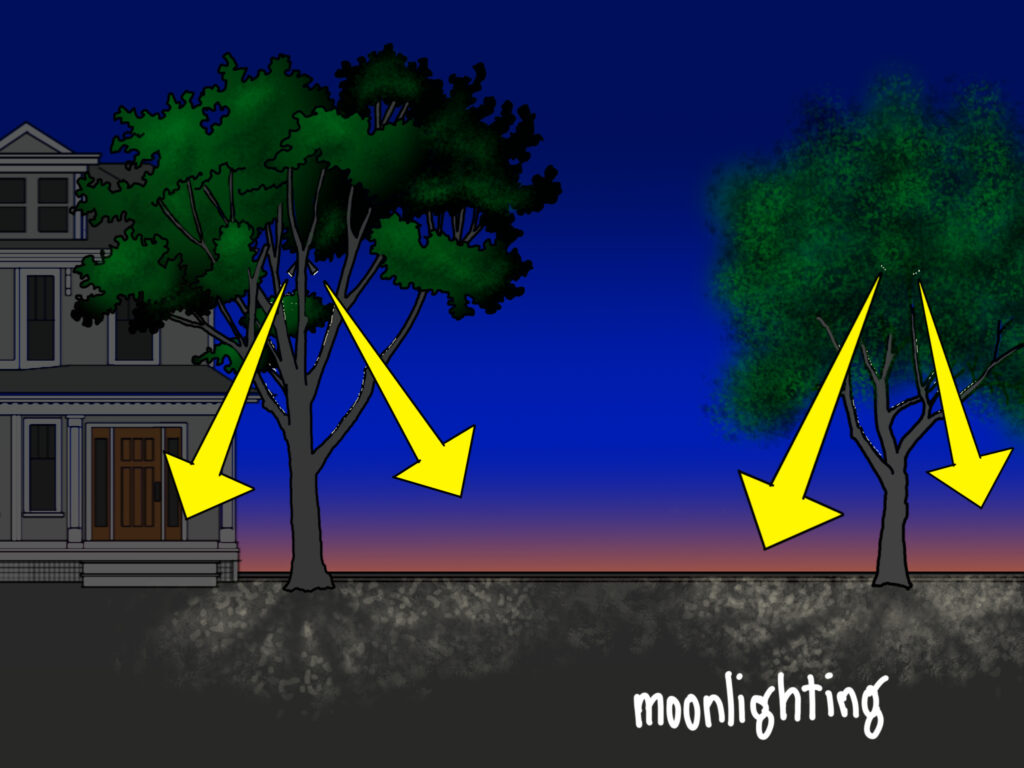
Let’s take those same spotlights and send someone (a professional, I hope) up into the tree to carefully place them among the branches and leaves. The pro might attach the fixtures with belts that need adjusted annually or screws that allow the tree to grow more before adjusting. Then ask your installer to run the wire up the backside of the tree (and dab paint on it to blend it into the trunk for extra good looks). Finally, aim the spotlights down at the ground, through the tree branches, so that light hits the ground in the same general direction as moonlight.
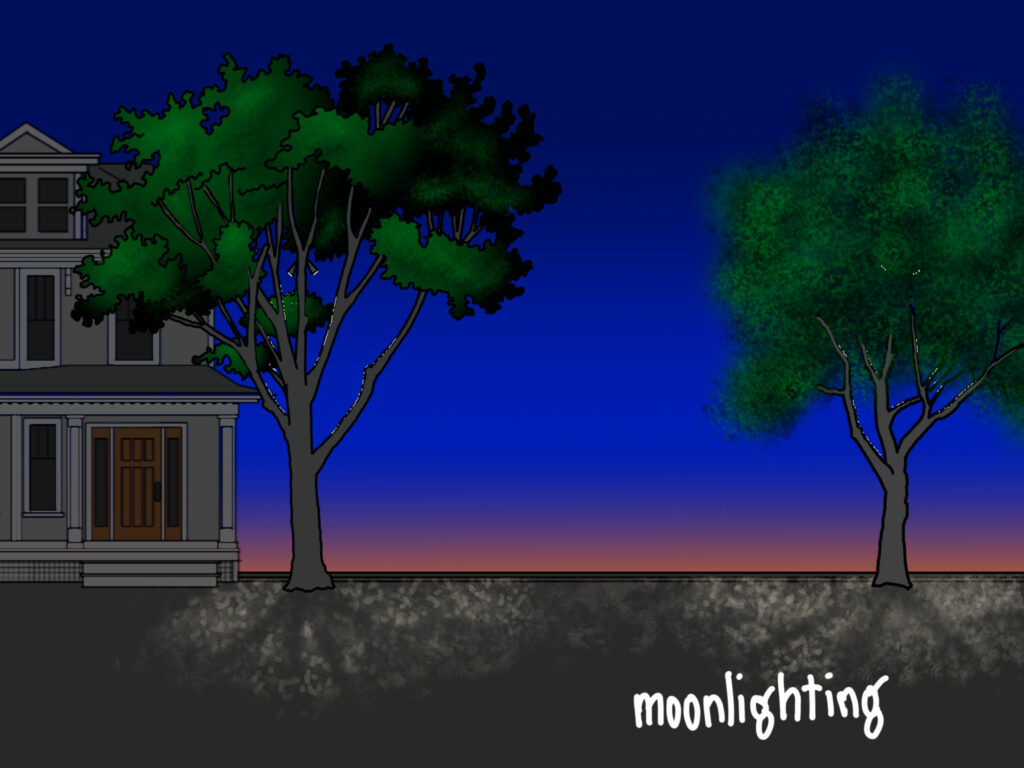
The end result can be magical, romantic, beautiful, functional, and more planet-friendly. Put them on timers, photocells, or motion sensors so they turn off when not needed, and enjoy the night.
Or you could lasso the moon and keep it above your yard….
